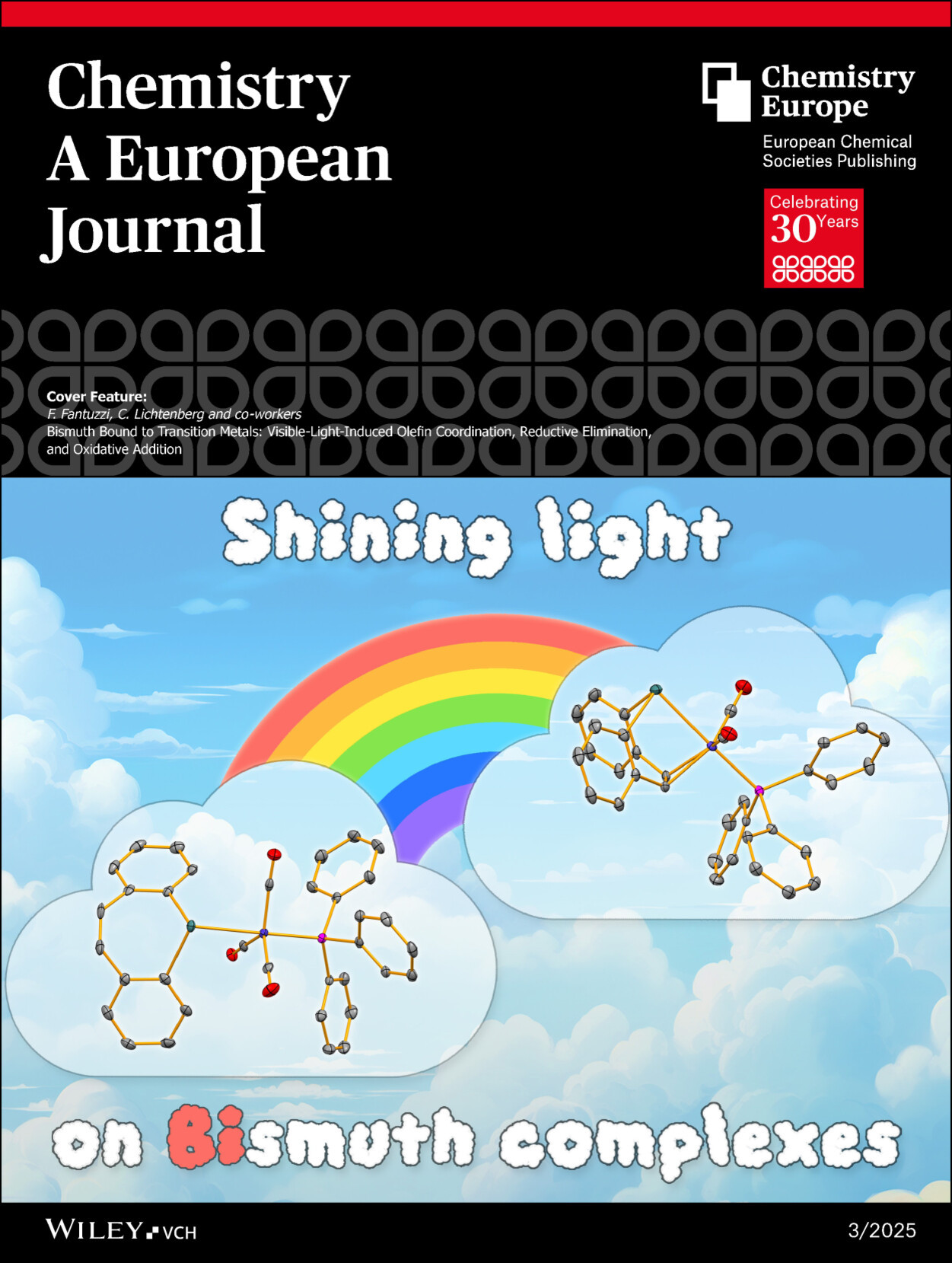
A collaborative study between Kent and the University of Marburg on photoactive bismuth-transition metal complexes has been highlighted as a Cover Feature in Chemistry – A European Journal.
The SISC research cluster is pleased to highlight a recent publication selected as a Cover Feature in Chemistry – A European Journal, showcasing collaborative work between the University of Kent and Philipps-Universität Marburg. The article, titled “Bismuth Bound to Transition Metals: Visible-Light-Induced Olefin Coordination, Reductive Elimination, and Oxidative Addition” explores the unique reactivity of bismuth-based ligands under visible light.
In this study, a family of iron, cobalt, and manganese complexes bearing dibenzobismepinyl ligands were synthesised and investigated under photochemical conditions. Visible-light irradiation was found to trigger selective CO elimination and olefin coordination, resulting in new hybrid metal–bismuth complexes. When two Bi-ligands are present, the systems also undergo reversible reductive elimination and oxidative addition of dibismuthanes—rare processes for main-group elements.
This work combines synthesis, spectroscopy, X-ray crystallography, and TD-DFT calculations to uncover the mechanistic pathways of these transformations. The collaboration involved Felipe Fantuzzi (Kent) and Crispin Lichtenberg (Marburg), exemplifying SISC’s commitment to advancing organometallic and main-group chemistry through international partnerships.
The article is available here.